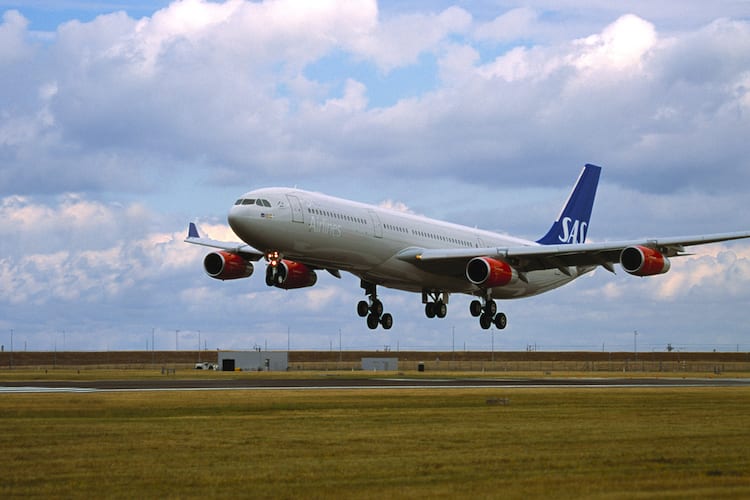
An SAS aircraft landing at Copenhagen Airport. Photo, courtesy of SAS.
The Single European ATM Research Agency Deployment Manager (SESAR DM) is in the final stages of launching a new ADS-B implementation plan that will synchronize the air traffic, avionics equipage and ground infrastructure elements necessary to meet EASA’s June 2020 equipage mandate.
SESAR DM’s new plan is the result of a July 2018 workshop held in Brussels to discuss the agency’s ADS-B equipage report showing that only 20% of the region’s in-service commercial aircraft fleet is equipped to comply with the mandate. After that workshop, 30 European air navigation service providers (ANSPs) and 70 airlines submitted their ADS-B infrastructure deployment and aircraft equipage plans to help formulate a plan.
Mariagrazia La Piscopia, head of strategy, technical and operations at SESAR DM, explained the next steps for the new plan in a newsletter sent to stakeholders. Before the end of December, SESAR DM will submit the ADS-B plan and a cost benefit analysis to the European Commission. In January, ADS-B program management activity will be finalized and SESAR DM will launch a new ADS-B website where operators will be able to view all of the information related to equipage and operation they need.
The website should be similar in nature to the FAA’s Equip ADS-B site that tracks equipage, answers technical questions and shows operators how to obtain an ADS-B performance report for their aircraft.
A major challenge facing SESAR DM, Eurocontrol and EASA is a lack of harmonization between the various European states in terms of ADS-B ground station deployment. Whereas in the United States, the FAA is the sole civil aviation regulator and ANSP managing the region’s ADS-B deployment and operation, the situation in Europe is more complex.
“Indeed, the implementation of ADS-B in Europe is going to be more complex compared to the situation in the United States, however no more than other technological deployments which need a harmonized approach,” a representative for SESAR DM told Avionics International.
Croatia, France, Latvia and Lithuania are among the countries that currently do not have ADS-B stations deployed at their main national and regional airports. Others, including Ireland and Switzerland, currently have no ADS-B ground infrastructure deployed at all.
SESAR DM has provided minor details about what the plan will feature, however, the agency describes it as a “long-term strategy addressing ground infrastructure optimization, spectrum congestion and the need to establish a dedicated exemption equipage mechanism.” The European Commission has also indicated it will consider allowing exemptions on ADS-B equipage while requiring operators to provide compliance plans and expected aircraft equipage timelines.